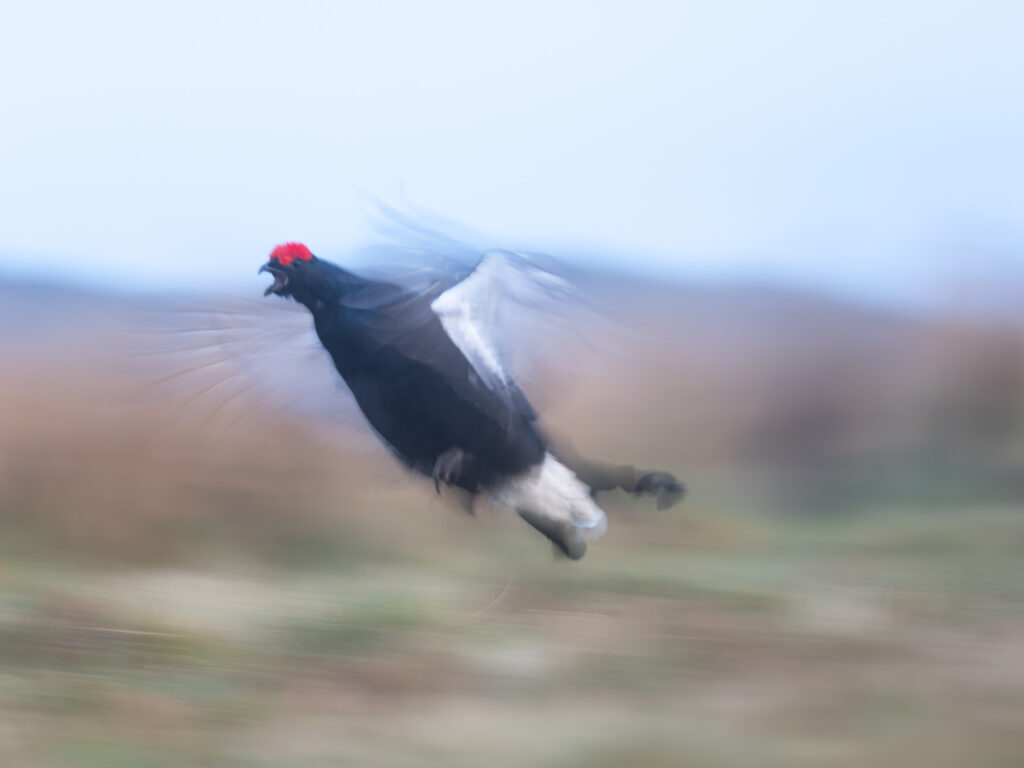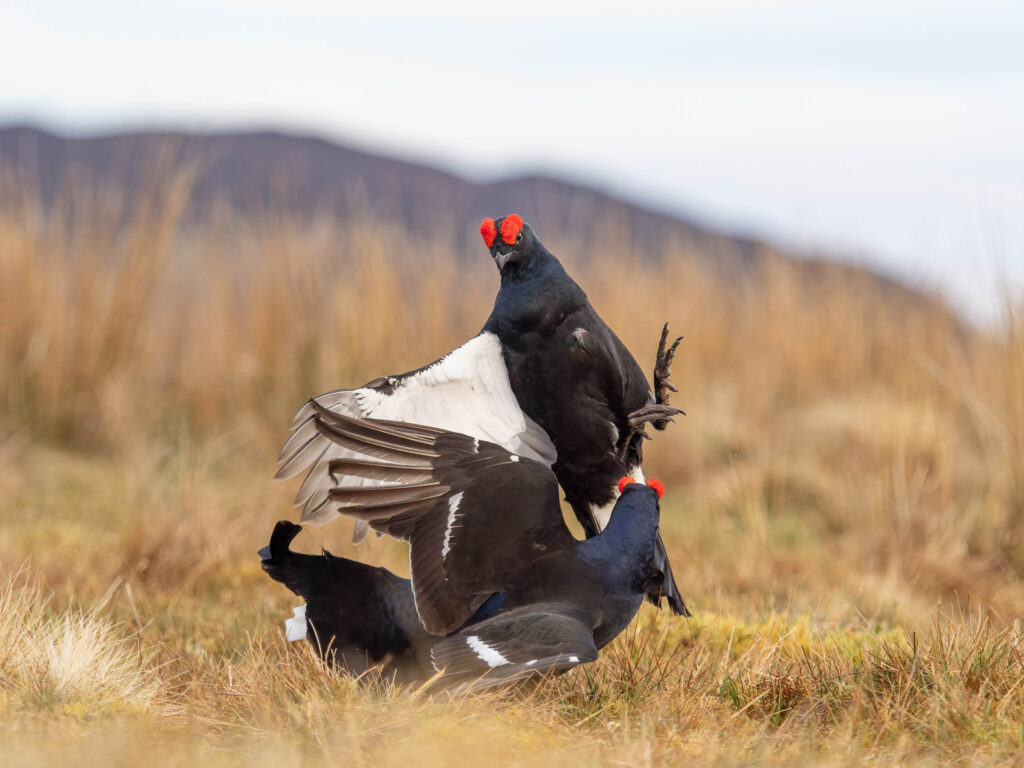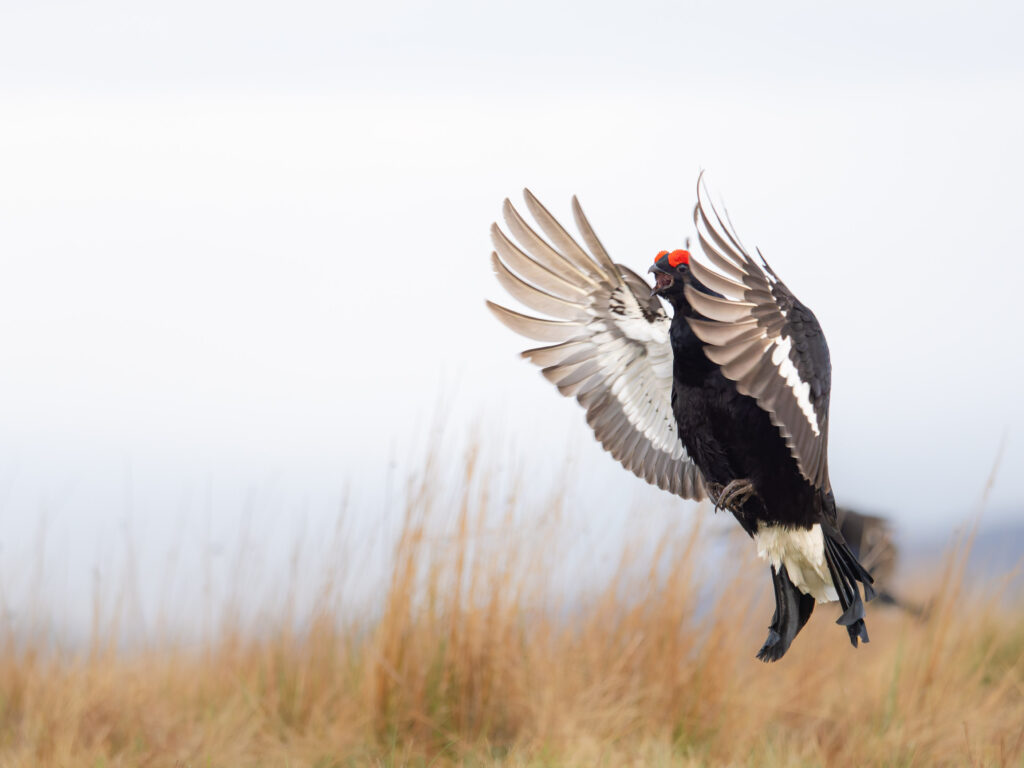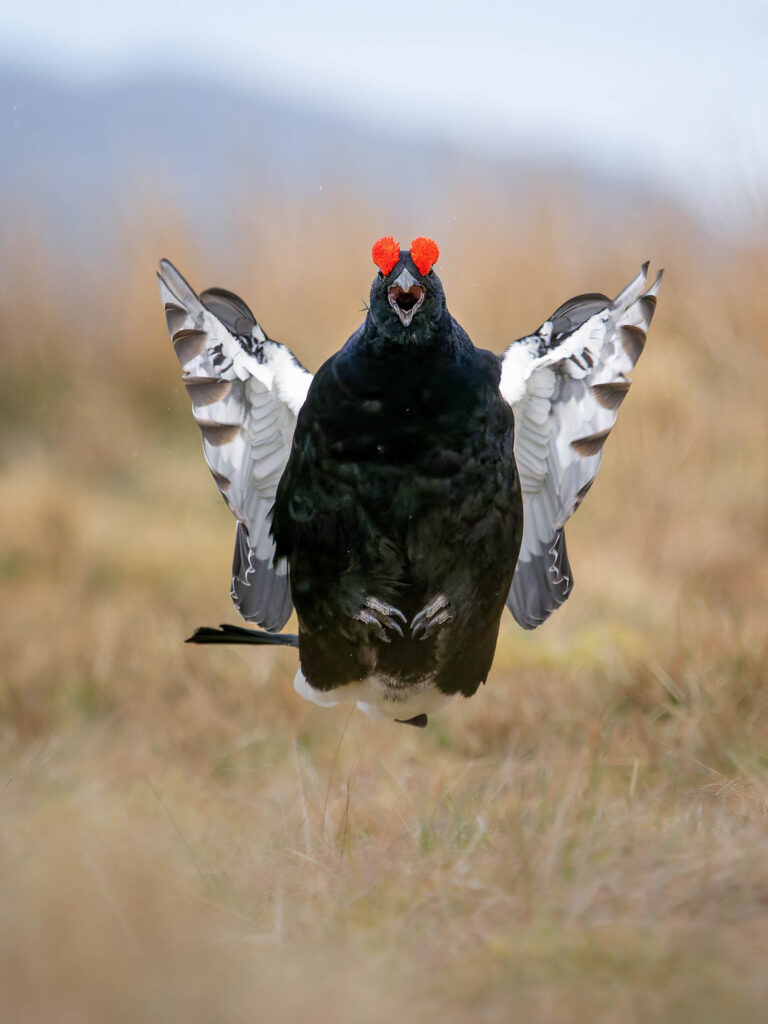May 9, 2025
OM System in Low Light – High ISO Photography
Tips for shooting in low light

In this post I’ll be sharing some images I’ve been taking during the black grouse lek in very low light conditions.
The black grouse is a red listed species so it is very important not to disturb them, which is why I get up three hours before sunrise. I met my clients who are coming with me to the lek, and we walk out to where I’ve put the Tragopan hides up in advance.
We make sure we’re hidden inside the hides about 90 minutes before sunrise and we don’t get out until after the grouse leave.
The grouse often show up an hour before sunrise when it’s still too early to start photographing, but I don’t wait until sunrise before I start to shoot. I like to get experimental and I often push the ISO to get early photos.
I use DxO Pure Raw 5 to de-noise my images and it works amazingly well!
Download DxO Pure Raw 5 free to try it out for 30 Days.
15% Discount for New DxO Customers use Promo Code: PAR_ESPEN
Panning
One of the techniques I use when it’s still dark is to pan along with a bird that’s moving. The object is to move my camera to match the speed of the bird and aim to get the bird sharpish and everything else a blur.
This technique allows me to use slow shutter speeds and push the ISO if needed as the final image isn’t really about the detail.

Blurred Action
Opposite to panning, I can have everything else in the frame sharp, but use a slow shutter speed to blur the action. Obviously, this has a very high failure rate and we’re basically just wanting the grouse to create some patterns with a slow shutter speed that look nice in a composition.

Portrait
I can also go for portrait images. Often a bird will be very still and I can use a slow shutter speed to make a nice portrait of the bird. Take a burst of images and some will usually be sharp.

Portrait and blur
I can also combine a portrait image with blurred action or movement. Often the females will arrive and they’ll stand about assessing the males, while the males will circle around them
I can then use a slow shutter speed to create a portrait of the female, but leaving plenty of space in the frame for the males to move around. I don’t mind the males being blurry and that can often help tell a story.

Freeze the Action
As it gets a bit brighter you might want to start freezing the action. I often aim to use at least a shutter speed of 1/1600 second so this can often lead to high ISO values. However the technology of PR5 can usually take care of that.


How far to push ISO?
A commonly asked question is whether it is better to use a slightly lower ISO, still high ISO but slightly lower and have a slightly darker image. Or is it better to make the image brighter and pushing the ISO even higher?
I would say that if you want detail in your image, you are better off pushing that ISO even higher and making it brighter because it is all but impossible to bring back much detail when the image is dark and you’ve been using a high ISO.

Backlit
When I photograph backlit I often start shooting even earlier, I don’t mind having some of my subjects a little bit darker, it’s quite moody and it has a certain feel to it. Especially if the sky has a bit of colour to it as well.


Silhouettes
Something I really tried a lot for this year, was silhouettes. So basically when I had nice colourful part of I would try to silhouette the birds when they flew up with the sky as the background.
It was really dark in these conditions and I would just exposing for the sky and wait for a grouse to fly.


ISO 40000
This is the highest I’ve ever pushed the ISO and got away with it, and it basically just works because it’s a silhouettes and I’m not dependant on details. Obviously it helps to have a nice colourful sky as a backgroud!

Pure Raw 5
It’s probably obvious by now, but the best way to get rid of noise in an image is to use a denoising software. I’ve been using DxOs Pure Raw for years now and the newest Pure Raw 5 is excellent at getting rid of noise and sharpening an image.
15% Discount for New DxO Customers use Promo Code: PAR_ESPEN
What’s the highest you’ve pushed the ISO and still got an image you liked?
This is an especially helpful post, Espen. I’m looking forward to trying out some of these techniques myself, though here in Alaska it won’t be on a lek. Based on one of your videos, I purchased a used E-M1 Mark II and 75-300 ii, and have been very pleased. Thanks!